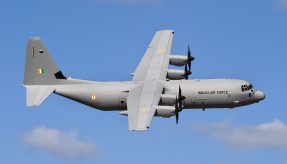
BAE Systems received a $60 million contract from Lockheed Martin to manufacture and deliver additional advanced missile seekers for the Long Range Anti-Ship Missile (LRASM).
The seeker comprises long-range sensors and targeting technology that help the stealthy missile find and engage protected maritime targets in challenging electromagnetic environments.
“Our warfighters need resilient, long-range precision strike capabilities to compete with modern adversaries,” said Bruce Konigsberg, Radio Frequency Sensors product area director at BAE Systems. “We’re proud to partner with Lockheed Martin in delivering this distinct competitive advantage to US warfighters.”
LRASM combines extended range with increased survivability and lethality to deliver long-range precision strike capabilities. LRASM is designed to detect and destroy specific targets within groups of ships by employing advanced technologies that reduce dependence on intelligence, surveillance and reconnaissance platforms, network links, and GPS navigation in contested environments.
This LRASM seeker contract continues the transition of the program from Accelerated Acquisition to Low Rate Production. BAE Systems has delivered more than 50 systems to date that have demonstrated excellent technical performance over multiple test events. The company also is working to make the seeker system smaller, more capable, and more efficient to produce.
BAE Systems’ LRASM seeker technology builds on the company’s decades of experience designing and producing state-of-the-art electronic warfare technology, and its expertise in small form factor design, signal processing, target detection, and identification.
Work on the LRASM sensor will be conducted at BAE Systems’ facilities in Wayne, New Jersey; Greenlawn, New York; and Nashua, New Hampshire.
image courtesy of BAE Systems
If you would like to join our community and read more articles like this then please click here
BAE Systems Lockheed Martin Long Range Anti-Ship Missile LRASM







